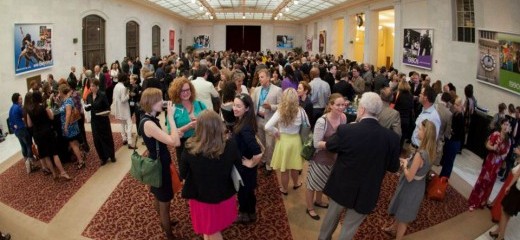
Photo: Dance/USA
Dancing in the Field: #dusaconf 2012
by Debbie Shapiro
I’m a full-fledged member of the no-end-in-sight student loan debt club. I once borrowed lots of money to obtain a degree in arts administration, uncertain about the likelihood of paying it off through a career in dance. It’s been over a month since I attended the Dance/USA conference in San Francisco, and with some space and time for reflection, I still contemplate some of the biggest questions that came up over the four days.
On the flight over to San Francisco from Philly I read Michael Kaiser’s “
The New Arts Model, Parts 1 and
2” (followed by a large chunk of Patti Smith’s
Just Kids—which you should all read, by the way). Kaiser wrote, “Some say I am hopelessly attached to a dying model. I believe I am hopelessly attached to a classic model.” I assume by classic model he was referring to those arts organizations, regardless of size, who have sustained themselves over long periods of time, becoming institutions with legacies, thanks to the stalwart administrators, boards, donors, and funders that have backed them over and over again. These institutions are set up, in part, to provide job security for key positions, and an overall sense of constancy of support for the art. The problem is, that definition leaves out
a lot of artists and arts workers: the white elephant in the room at most Dance/USA events I’ve attended in the past. Now more than ever it seems the big ballet companies, the experimental independent artists, emerging leaders, and everyone in between feel the pains of struggling to sustain. In addition, as exciting as it is for me, I know there’s a generation of artistic directors out there who are scared of technology (my computer crashed during the conference, but
Backblaze saved the day), and are looking to Millennials for answers.
My first day in San Francisco was fully devoted to the Institute for Leadership Training (DILT), a subsidized professional development program, launched by Dance/USA last year in response to a request for more mentorship opportunities. I was matched with the vibrant
Shayna Keller, choreographer and Managing Director for the Dance Resource Center in Los Angeles. Shayna is impressively plugged in to her local community, despite how young she is. We spent the day talking dance field-related challenges and ideas, and decided that I’d help her sketch a strategic plan for a big artistic dream, over the next six months.
Signing up to be a DILT mentor helped subsidize the stifling conference expenses, an issue which came up more than once in conversations about class and diversity within the conference itself and the dance field as a whole. I stayed with a friend and played hookie a few times. I prioritized connecting with Shayna and a few new faces everyday, learning their names and what they care about. I saw local dance companies and a range of different urban venues. I tweeted everyday. I went to dinner with people I had met just five minutes earlier. I listened while others vented about their struggles, and did my best to spin my own whines into lessons learned before they came out of my mouth. Nonetheless I couldn’t ignore that, in part, we were bonding over self-preservation techniques in light of an uncertain future.
Then came Simon Sinek (
Ted Talk Extraordinaire)’s keynote speech, which, despite a few far-reaching examples (like how dance and the military are fundamentally the same thing, or bracketing the Apple company and the Civil Rights movement together for both having strong leaders), posed some tough questions:
“Why does your company exist? Do we really need another one? Why should anyone care? We’re living in leaderless times. Leadership is: ‘I have no clue how to get there, I just know where there is.’ True leaders exist “above” their job duties, and I’m hard pressed for a name of a young choreographer who lives above their job today.”
Yikes! (I think to myself.) Do I agree that there aren’t any dance leaders today? Absolutely not. In fact I think Philadelphia is home to a village of them, many of whom I’ve met somewhere along the way through the fabulous Lois Welk, head of DanceUSA/Philadelphia. And many, through their magical spirit and light have kept my devotion to the craft unwavered, despite the sad ratio of wages earned to monthly loan payments that I, like many of my peers, are on the hook for.
Sinek says, “Stop calling yourselves not-for-profit. Your metric is different. Who wants to be known for what you’re not for? What is working? Talk about that obsessively. The inspirational campaign I offer to the dance world for you to preach is your undying spirit.”
Speaking of undying spirit, this wasn’t my first Dance/USA conference, but after Washington DC in 2010, I wasn’t sure I needed to attend another. Who is this service organization really designed to support anyway? (Jeremy Barker touches on this, and other relevant issues, with regard to Theatre Communications Group
here.) Though I can’t say I left Pentagon City’s Ritz Carlton feeling empowered or supported, I also can’t completely blame Dance/USA, I realize now. In three days I’m not sure I ever left the hotel, I was barely dipping my toes into social networking, while physically hiding in corners where I’d find familiar, Philly faces.
I decided to attempt another conference this year because: 1. I’ve chosen a career in dance (or maybe it chose me), 2. I am an active member of my community, and 3. in these tough times I could really use a jolt of inspiration. This year, however, I approached the entire event with a new tech-friendly, a-little-work/a-little-play attitude, and that – combined with the beautiful background of the Yerba Buena Center for the Arts – made for something worth writing about.
I brought a wifi-friendly mobile device and downloaded the conference app. The intuitive interface allowed me to know, at any given time, what conversations were happening where, who was speaking on what panel, a brief bio for all speakers, and a “tunnel” to the conference’s Twitter and Facebook pages. Following the #dusaconf hashtag was a guilt-free way to pick and choose which sessions to go to. The rise of dance writers and technophiles (see: @sydneyskybetter, @trailerpilot, @dancinbranflake, @jenniferedwards, and @ToasterDog, to name a few) provided a wealth of tweets, amplifying poignant ideas from rooms and conversations I wasn’t physically in: a major time and energy saver.
Recently appointed by Yerba Buena as the Director of Performing Arts, Marc Bamuthi Joseph moderated the closing plenary, a community forum, which packed in eight artist presentations plus an attempt at commenting on diversity and community art. Joseph addressed those of us still remaining after the three-day event with a mere surface scrape of a densely huge topic, “How we see dance affects who we invite to see it. Who is in our audiences? How are we reading the dance we’re watching?”
Upon leaving the conference, pleased with the new relationships I’d gained, I felt inspired to stay connected to the field and those that care about dance by way of social media. One session I skipped, called
Dance: A Field In Danger, was generously reflected on
here by Lauren Warnecke, a dance blogger, whom I heard speak at the Blogosphere session. She asks, “How do we create and/or reinterpret successful and sustainable jobs in dance-related professions that make dance a viable career choice?” With all due respect, I wonder how Mr. Kaiser might respond to this one.
Dance/USA Annual Conference, San Francisco, Yerba Buena Center for the Arts & ODC San Francisco, June 27-30, 2012. The next conference will be held in Philadelphia in June 12-15, 2013.
By Debbie Shapiro
August 14, 2012



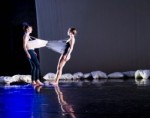
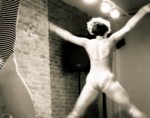
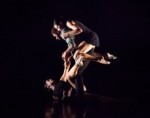
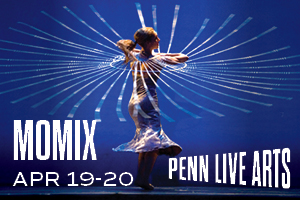
.png)


